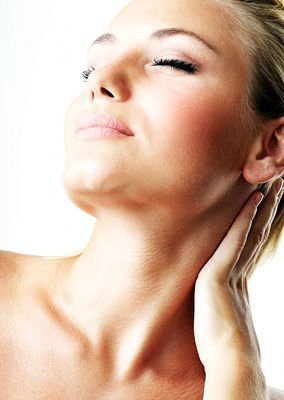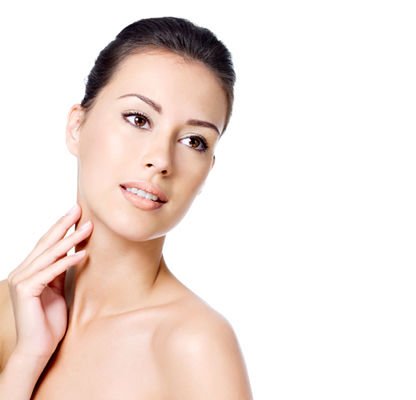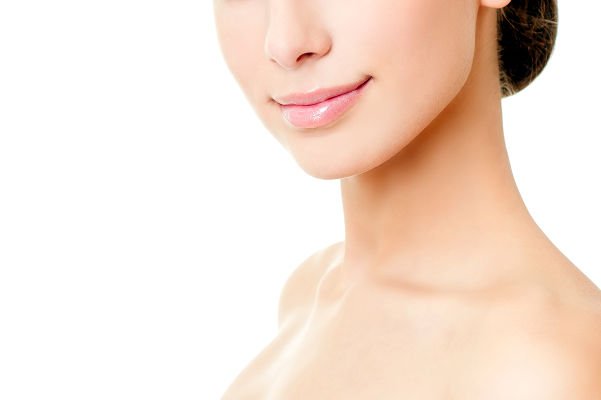 IML presents non-lift facial solutions:
IML presents non-lift facial solutions:
The deep tissue is replenished with push-up threads, guiding a needle from the temple to the lower part of the cheek. Then the skin is tensed and the excess is eliminated by suturing in the lobe region. The scars are tiny and go completely unnoticed.

This technique attempts to produce a correction of excess skin and the loss of facial and cervical structures without the need for surgical techniques, by way of repositioning of structures through elements tensors.
The placement of these elements is done by a precise correction, creating a designed correction depending on the manner addressing the need of each patient.
It is a non-surgical technique that only requires incisions of 1-2 mm to enter and anchor in hidden areas of the scalp. The level of implantation of the tensors structures is at the level of the superficial hypodermis, below the epidermis and dermis, in the fat immediately below the skin.
It is done with local anaesthetic only in the points of entry and exit of the tensors and is recommended to not ingest AAS the few days before to avoid haematomas. Immediately after the placement of the tensors, there is a discrete inflammatory reaction that lasts 48 hours that does not impede the patient from immediately returning to their normal social lives after receiving this treatment.
The guidelines are for patients to take an antibiotic for 4 days and AINES for 48 hours.
This procedure is compatible with a posterior surgical lift.
A “touch-up” can be done, with insertion of more threads a few years after the initial procedure or when the patient needs a complementary correction.
There are various types of Tensors Threads, they have gotten better with each version and have been perfected, offering better options for correction.
These are threads made of polylactic acid. Polylactic acid is the composition of some of the most widely used reabsorbable sutures, like Dexon ® or Vycril ®, for more than 15 years in conventional medicine and is well known the way in which the skin responds to this material. The threads have small teeth arranged to fill in the spaces.
They are especially fine and for that reason are difficult to place.
Factoring in the helicoidal disposition in three directions, these tensors have little capacity for tension and for correction. Given its little capacity for suspension, we cannot trust that they are able to sustain the weight of very oily or heavy skin. The patients in which this works well have thin skin, a tight subdermal tissue and do not have a hanging and heavy Bichat ball of fat.
As a reabsorbable material these tensors disappear, metabolized by the skin after 8 months. The correction obtained is maintained thanks to the fibrosis that has generated by the tensor during its time of existence. This fibrosis is conditioned for an inflammatory and scarring response of the patient. The intensity of the response, the level of correction and the permanence of the correction on the long-term are partially unknown.
They can serve as a complementary filling material to the other types of tensors of a permanent character.
They are the least interesting but are the first to be authorized in Spain.

Thigtening Threads treats facial flaccidity and volume corrections
Devised by Dr. Sulamanize, a doctor of Russian origin, more than 10 years ago. There are two types:
They are toothed in a helicoidal arrangement in a three-dimension space and are distributed in an angled direction opposite from the centre toward each of the extremes. This special arrangement makes it so they do not have any stabilizing elements to a fixed structure and the tensor must support itself in both directions below the skin to maintain the correction.
Basically, the correction is achieved because the placement of the skin gathers around the toothed threads. They are not reabsorbable and for this reason the correction is permanent except in the case that they are displaced because they are not anchored to any rigid structure in the face or neck. This displacement is very rare.
They are used by placing them on a needle with an orifice in the centre that allows it to “come and go” below the skin and the thread is not exposed at any time. They are ideal for the relocation of the cheeks, and in cases of thick and heavy skin it is the best alternative . A type of net is created, arranging the threads, as if they were the tape that seals a pouch of tobacco, puckering each suture and elevating the cheek. Stacked pouches of tobacco are used to avoid the perception of any marked fold.
It is not anchored anywhere because it is really a suture that sews itself. It places the threads from an incision of 1-2 cm at the level of the temple and the thread returns to the same location and makes the knot.
They also can serve to do a rejuvenation of a hanging central chin, the result is similar to a surgically improving mentoplasty (chin prosthesis).
This firm standing type of non-reabsorbable threads are capable of maintaining the correction for a minimum of 5 years. They are removable but in some cases, if the fibrosis that is produced is very tough, it can be difficult. Normally the type of fibrosis that is produced is very elastic and can be removed easily.
One inconvenience is that they are blue coloured threads and for that reason it is not possible to use them in thin skin because the blue can be seen below the skin. But this inconvenience also has advantages, as they are blue, they are easy to detect with the use of polarized light and by using a small hook, similar to those used in crochet, can be removed easily.
This is a material in thread or suture form that has been used successfully in reconstructive surgery for many years. The application of the relocation of facial structures to correct the effect of flaccidness and the falling of tissue in the face and neck has been done in the USA for more than 7 years.
The great novelty of these threads and sutures is that they allow better corrections. All the sutures are threads with three-dimensional arranged teeth and helicoidal symmetry and have a small hook at one end.
These are used to correct the middle third of the face:
An incision is made at the level of the temple, of approximately 2mm and hidden in the hair, and various threads are introduced by way of a needle up to the nasogenic line. In this way four or five threads are placed in a range of locations, with each small hook making a pass, anchoring them to the rigid structure of the periosteal, in a manner such that each thread is next to the other and each of them make one pass by the periosteal as the anchor. The hooks are cut and the threads are knotted in pairs. After the threads are “tied among themselves and to the anchor”, the skin hangs from the micro-teeth of these threads that are now fixed, the skin is placed by these small teeth creating the necessary correction.
This modality permits the repositioning of the cheek, correction of the nasogenic line and the removal of marionette or bitter lines. And the middle third of the neck:
An incision is made at the level of the mastoids, hidden 2mm behind the ear. Several threads are introduced by way of a needle up to the centre of the neck. In this way four or five threads are placed in the neck, in parallel but confluent to the 2mm incision behind the ear. The rest of the procedure is the same as in the middle third of the face.
This method is used to remove the drooping of the facial oval and to correct the excess skin of the neck and submandibular region.
They are absolutly precise, better anchored, great correctors and are provide outstanding results: They allow for the technique to be done while incorporating the patient and placing the “hanging” skin, dividing the correction in a multitude of almost microscopic elements made up of the teeth of each thread. There is no risk of asymmetry. The correction is not concentrated in one direction of tension but is divided between the micro-toothed surfaces created by the introduction of these threads.
They are combinable with Suitable Threads, with injectable filling materials, with any other technique. It has not been studied if it is possible to use Radiofrequency on a patient who has Contour Threads.
Treatments at IML are personalised according to each patient's characteristics. You can request an informative consultation with one of our medical experts.